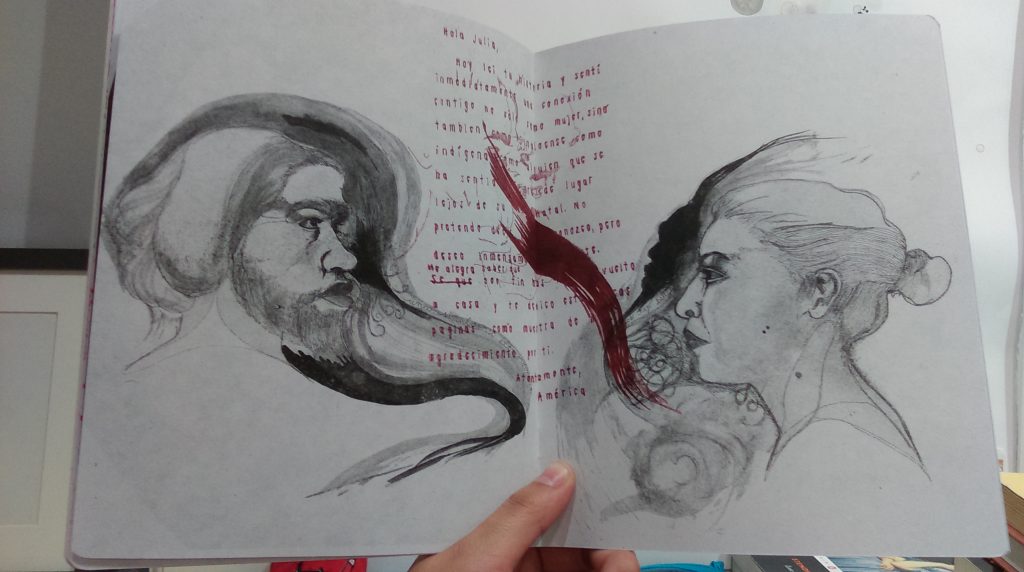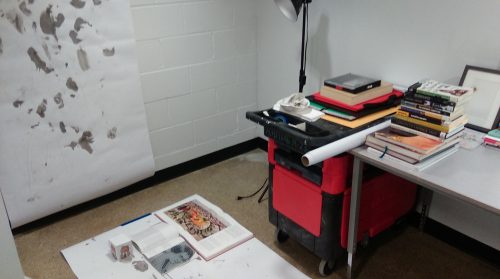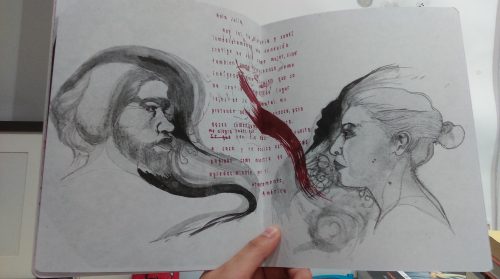
Fall Thesis Critique Checklist

What do all of the things in my studio have in common? Well, that’s my job to explain!
Hello once again, reader! I’ve been hard at work since I last wrote, as next week we’ll be passing the midpoint of the semester and almost immediately arriving at fall thesis critiques.
What are fall thesis critiques? Well, for students in their thesis year, the final fall semester marks a critical point where we present our thesis project ideas and their corresponding developments to all of the Art and Art History faculty as well as second- and first-year cohorts of the Interdisciplinary Arts and Media and Book and Paper MFA programs.
As you can imagine, there is quite a deal of preparation involved in presenting at fall thesis critiques, so I thought it might be helpful to create my checklist, along with my personal status report, of the necessary components for being ready to have a good critique experience. Of course, this is by no means the only way to be prepared, but I hope it provides you with some insight on what it looks like for me!
- Meet with Thesis Committee – Completed. Have your committee formed and have already met to discuss your proposal and work trajectory.
Happily, not long after I last wrote, I formed my thesis committee and had initial meetings with each member. Though I won’t be able to meet with both committee members before critiques, I am checking in with them electronically to get their input on how to best use my critique time. - Decide on Tone – In Progress. Speaking of how to utilize critique time, decide in advance what sort of conversation you want to facilitate in your critique.
Do you want technical and/or logistical advice? Do you want academic references? Currently, I am weighing how much of my technical plan to include, as one of my main interests at the moment lies in seeing connections in my creative work that I might not have seen on my own. - Observe and Organize – Very Much In Progress. Compile what you’ve been working on, take a step back, and notice themes and categories emerge.
This is the very tough part for me: sorting through and connecting the seemingly incongruous. I honestly can’t say I’m there yet, but I’m writing out in a linear form my process up until this point to see what things reoccur and, in effect, should be highlighted in my presentation.
Looking back at previous work for connections.
- Pitch Your Presentation – Not Yet Started. As much as adages can induce an involuntary eye-roll, they exist for a reason–they’re often true. That’s all to preface, “practice makes perfect.”
Well, as close to perfect for you as possible, anyway. In the next several days, I’ll be having more studio visits, peer time, and Thesis I meetings that I’ll be using not only to try and accomplish #3 above, but also to gauge how my resulting key points and approaches “read” to others. As I have these visits and experiences, formal and informal, I’ll ask myself, “How close am I to attaining the conversation that’s the most useful to me through my current methods, and how can I get even closer?”
As I return to this checklist in real time, I leave excited for that next big step in the creation of my thesis project, and I’ll be reporting back soon to debrief from that milestone!
